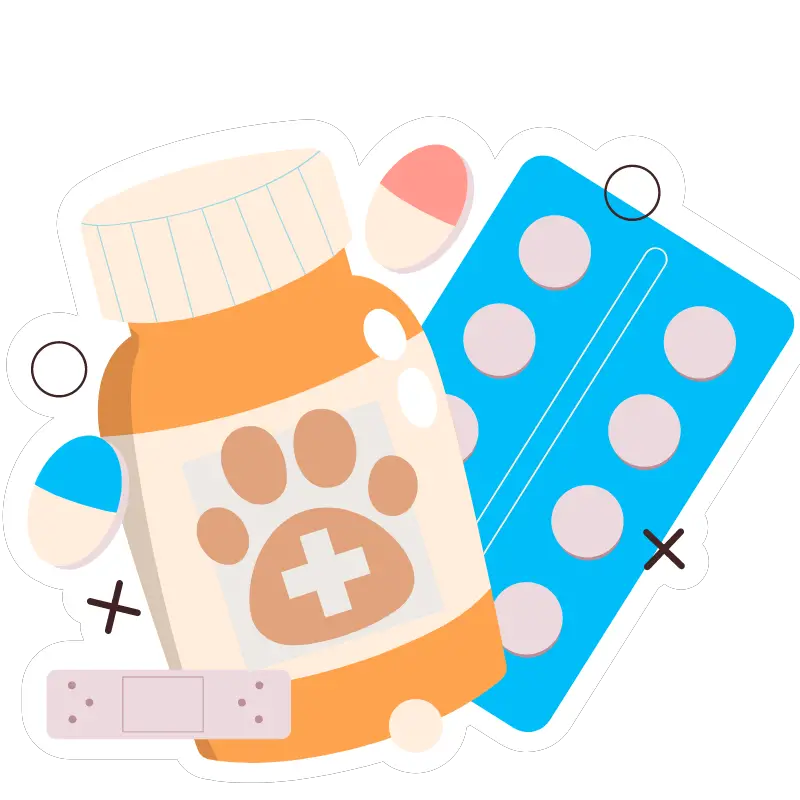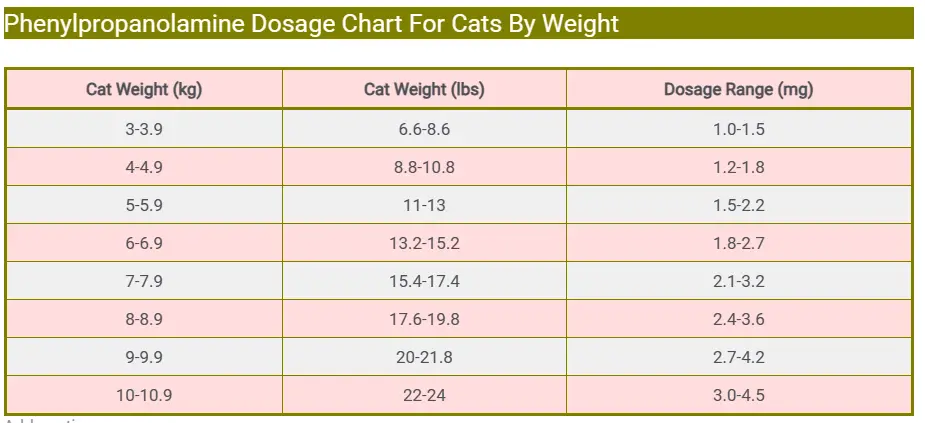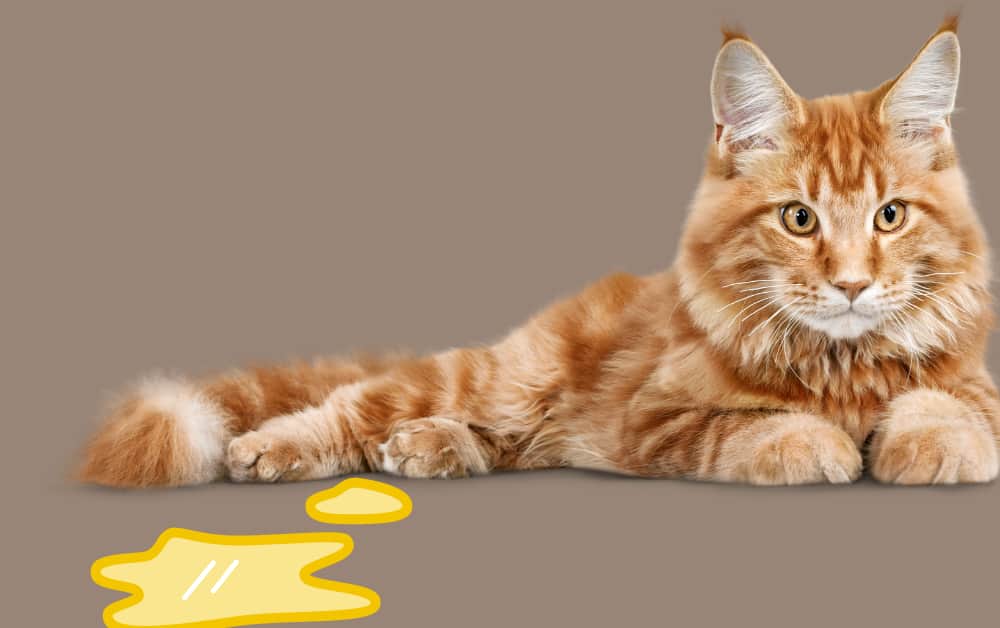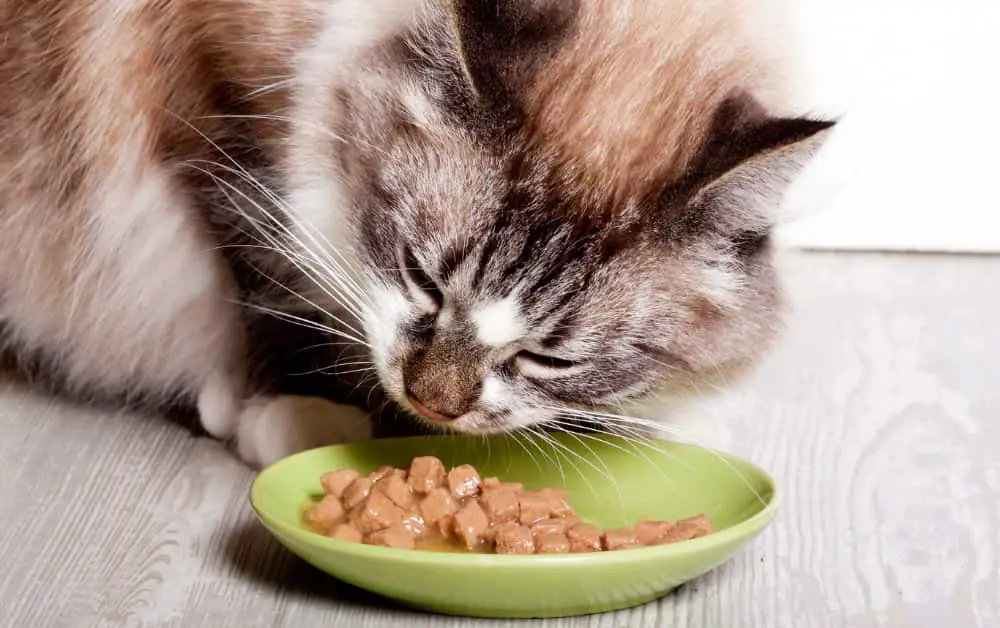The veterinarian-recommended dosage of Phenylpropanolamine for treating urinary incontinence in cats is 1-1.5 mg/kg (0.4-0.6 mg/lb) for cats weighing more than 3 kg. However, the dosage of the medication can be adjusted, either increased or decreased, based on the severity of the urinary incontinence.
Phenylpropanolamine Dosage For Cats

-
Ideal Dose: 1-1.5 mg/kg (0.4-0.6 mg/lb)
-
Uses: For treating urinary incontinence in cats.
-
FDA Approved: Proin® is an FDA approved.
-
Variants: Tablets, Liquid.
-
Storage & Handling: Room Temperature.
-
Administration: Every 8 to 12 hours.
Disclaimer: Self-medication can be hazardous. Please consult your veterinarian for personalized guidance on the appropriate dosage for your feline friend specific condition.
Introducing medication to our feline companions can be a daunting task, especially when it involves deciphering the appropriate dosage.
Phenylpropanolamine, a medication commonly used in veterinary medicine, poses unique considerations when administered to cats. With their distinct physiology and sensitivity, finding the correct dosage becomes crucial for ensuring both efficacy and safety.
In this guide, we delve into the intricacies of phenylpropanolamine dosage for cats, shedding light on the factors that influence it and providing essential insights for responsible pet care.
What is Phenylpropanolamine For Cats?
Phenylpropanolamine (PPA) is a medication that has been used in the past as a decongestant and appetite suppressant in humans. However, it’s not commonly used any more due to safety concerns.
In cats, phenylpropanolamine has been occasionally prescribed by veterinarians to manage specific conditions, such as urinary incontinence or obesity. It works by tightening the bladder sphincter muscles, helping to control urine leakage in cats with urinary incontinence.
However, it’s crucial to note that the use of phenylpropanolamine in cats should only be under the guidance and supervision of a qualified veterinarian. Like any medication, it can have side effects and may not be suitable for all cats.
Please note that FDA has withdrawn approval for the use of PPA in both human and veterinary medicine due to concerns about its safety, particularly regarding its potential to increase the risk of strokes.
Phenylpropanolamine Dosage For Cats
In general, the typical dosage of PPA for cats with urinary incontinence ranges from 1 to 1.5 mg/kg of body weight, given orally every 12 to 24 hours. However, dosages may need to be adjusted based on the individual cat’s response to the medication and any side effects that may occur.
It’s crucial to follow the veterinarian’s instructions carefully and not to exceed the prescribed dosage. Giving too much PPA can lead to adverse effects such as elevated blood pressure, rapid heart rate, restlessness, and potentially more severe complications.
Brand Names
-
Proin®
-
Propalin®
-
Cystolamine®
-
Uricon®
-
Uriflex-PT®
Phenylpropanolamine Dosage Chart For Cats By Weight
| Cat Weight (kg) | Cat Weight (lbs) | Dosage Range (mg) |
|---|---|---|
| 3-3.9 | 6.6-8.6 | 1.0-1.5 |
| 4-4.9 | 8.8-10.8 | 1.2-1.8 |
| 5-5.9 | 11-13 | 1.5-2.2 |
| 6-6.9 | 13.2-15.2 | 1.8-2.7 |
| 7-7.9 | 15.4-17.4 | 2.1-3.2 |
| 8-8.9 | 17.6-19.8 | 2.4-3.6 |
| 9-9.9 | 20-21.8 | 2.7-4.2 |
| 10-10.9 | 22-24 | 3.0-4.5 |
The above PPA dosage chart for felines by weight is provided for educational purposes only and should not substitute for veterinary advice. Always start with the minimum dose for you feline until your vet prescribes an increase in dosage.
Related Post: Clindamycin Dosage For Cats
PPA Uses in Cats
-
PPA is commonly used to treat urinary incontinence in cats.
-
PPA helps improve bladder control by increasing muscle tone in the bladder and urethra, which can be beneficial for felines experiencing issues with urinary retention or dribbling.
Related Post: Praziquantel Dosage For Cats
PPA Side Effects in Cats
-
Increased Heart Rate
-
Agitation or Restlessness
-
Hypertension (High Blood Pressure)
-
Loss of Appetite
-
Vomiting or Diarrhea
-
Urinary Retention
-
Allergic Reactions
-
Seizures
-
Behavioral Changes
-
Tremors or Shaking
Which Cats Should Not Take Phenylpropanolamine.
Felines with the following health issues should not take Phenylpropanolamine without veterinary recommendations.
-
Cats with hypertension
-
Cats with heart disease
-
Cats with hyperthyroidism
-
Cats with urinary tract obstruction
-
Cats with liver or kidney disease
-
Cats with diabetes mellitus











